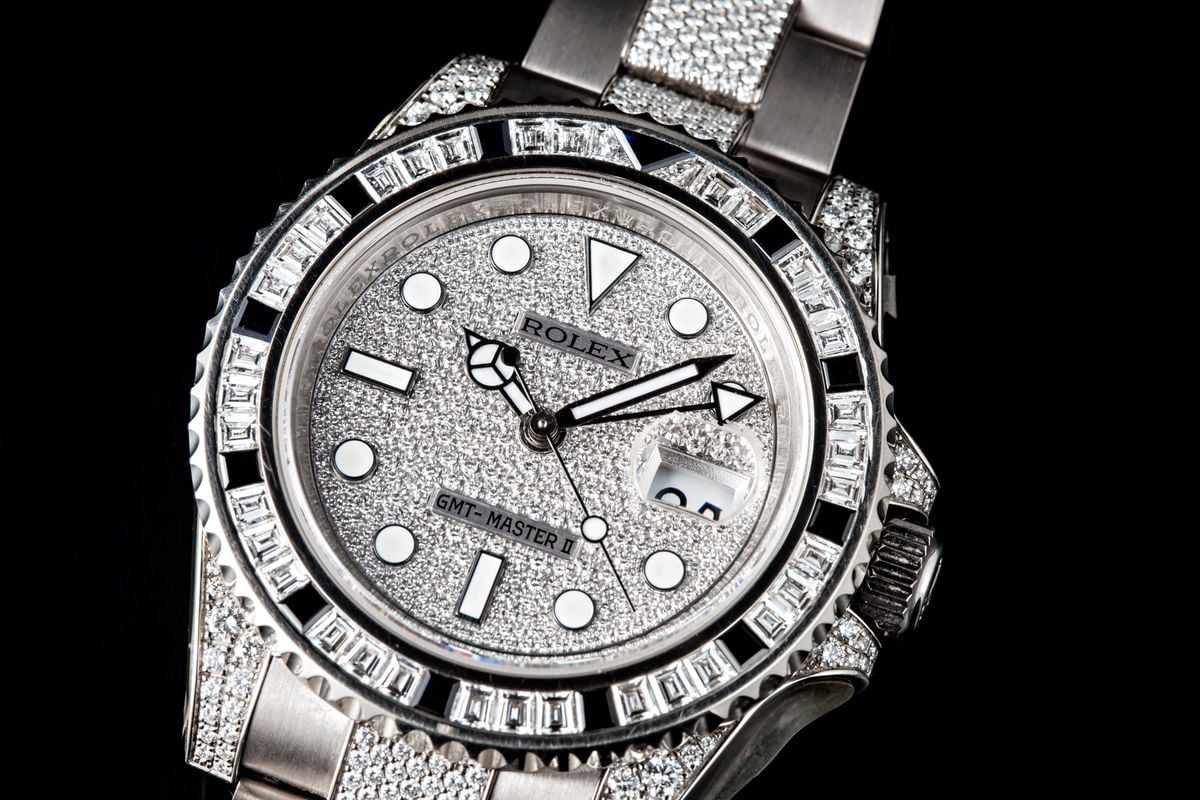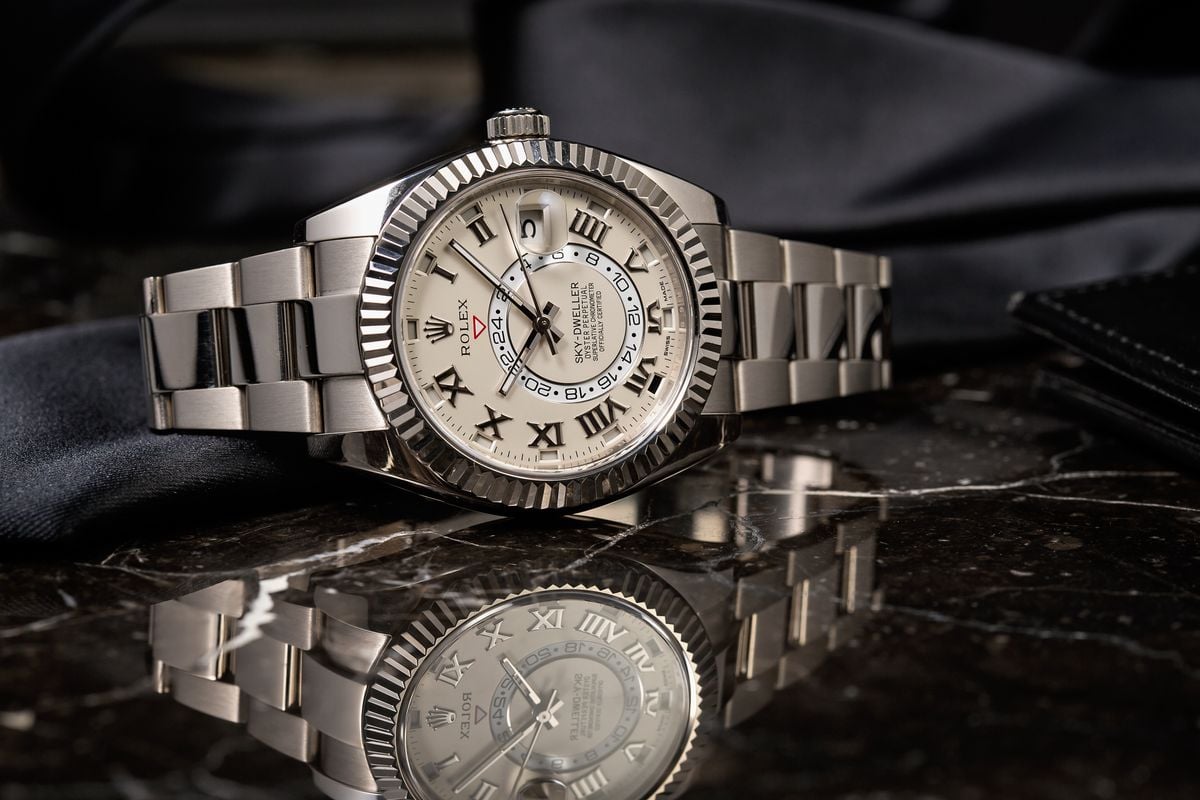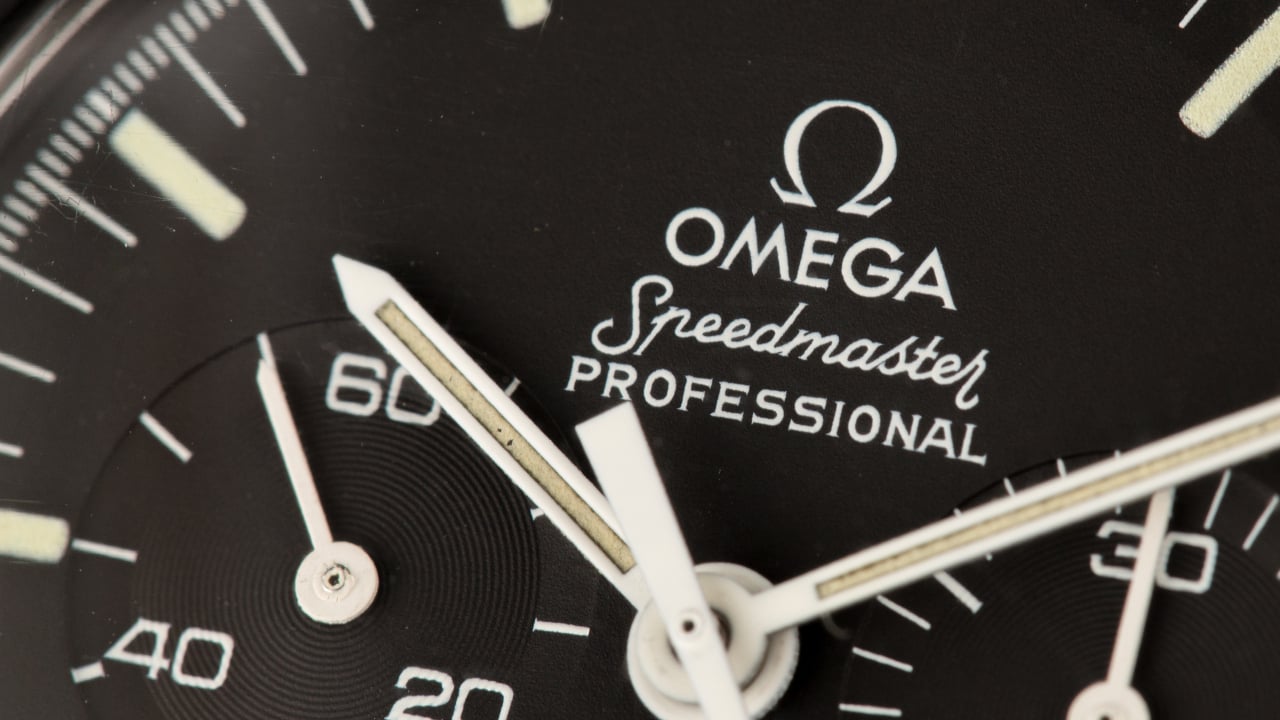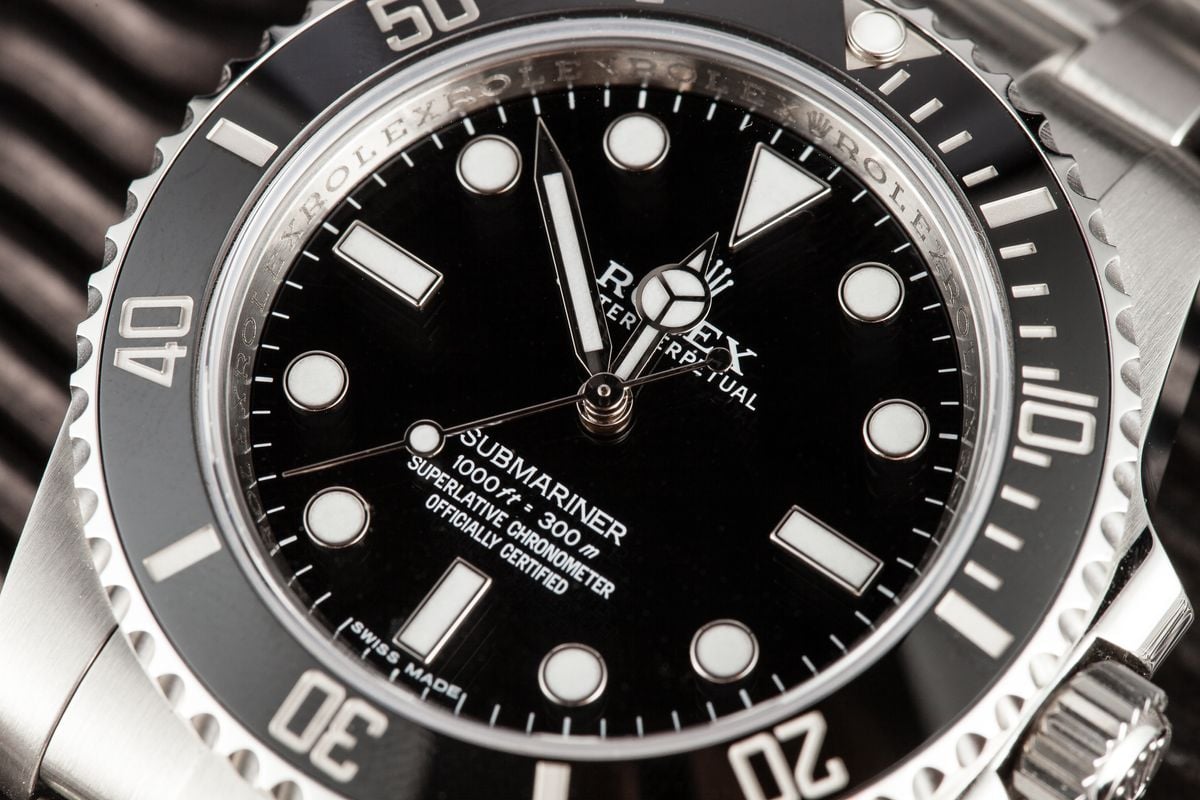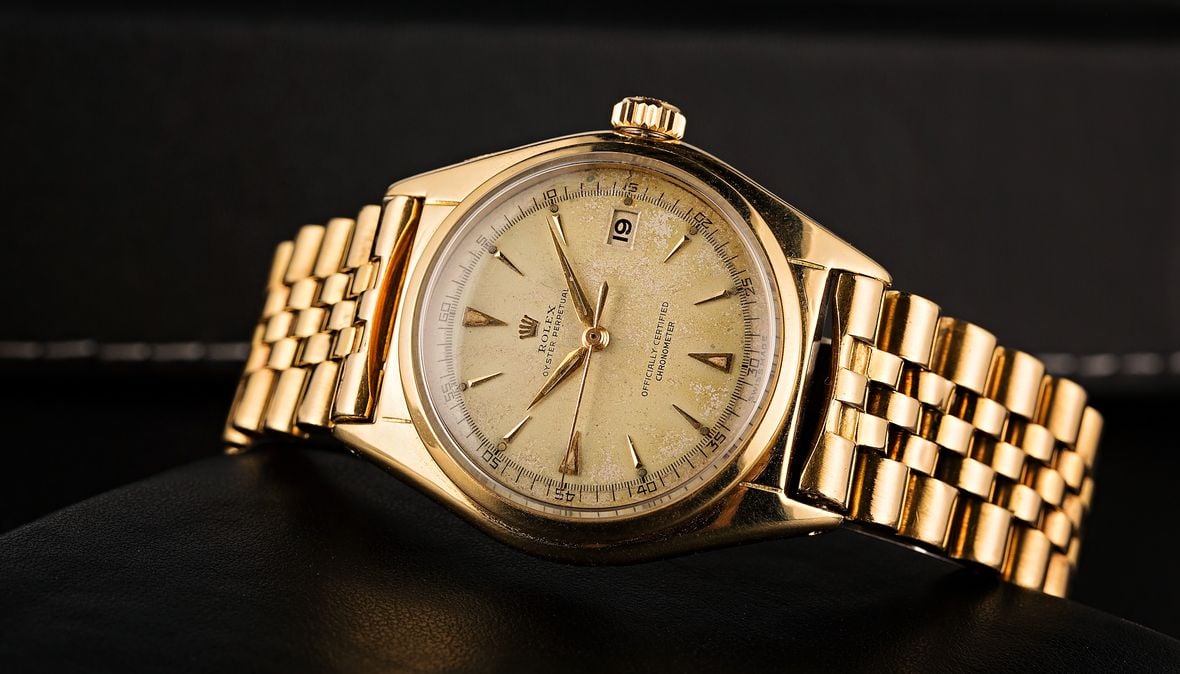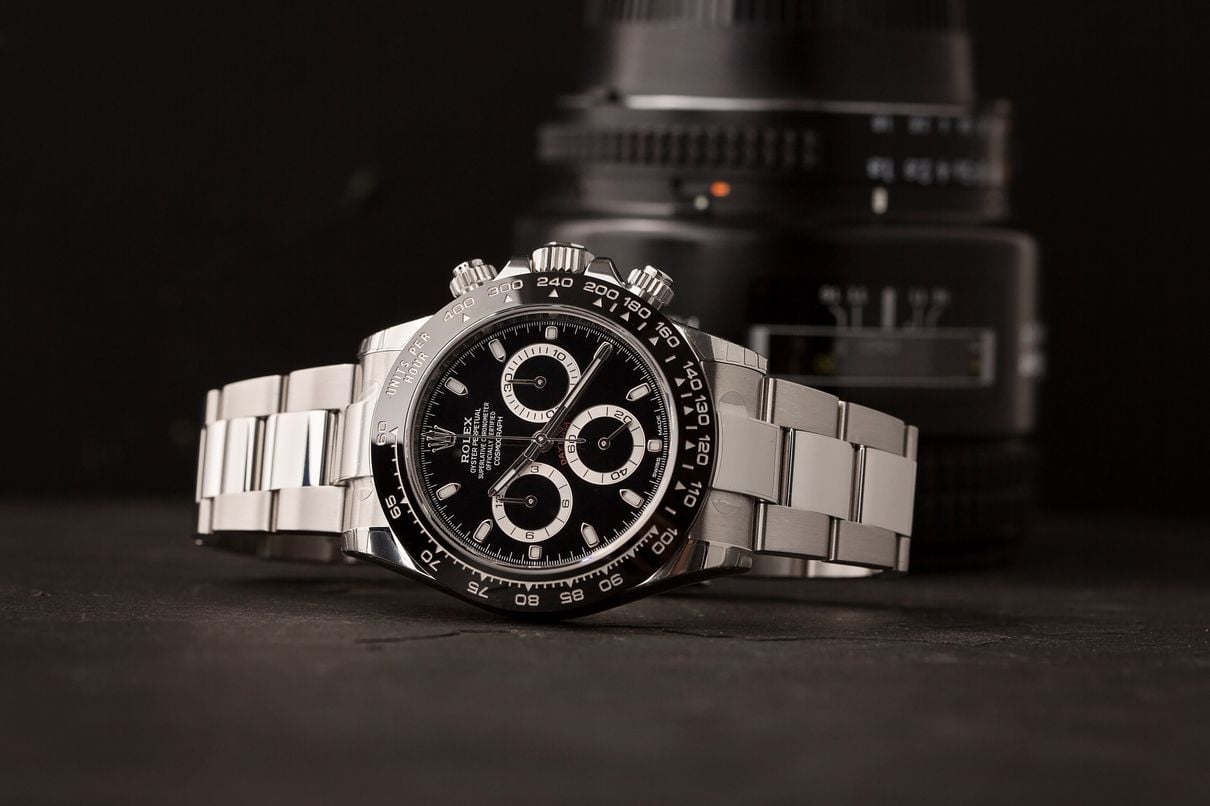Of all the design details of the Rolex GMT-Master watch, its bezel is the most distinguishing. Characterized by 24-hour markings and the ability to rotate in both directions, the GMT-Master’s bezel is an integral part of how the watch indicates multiple time zones. However, aside from its functionality, the design of the bezel also contributes significantly to the style of the Rolex GMT-Master – particularly when it is in a two-tone colorway.
While the fundamental look of the GMT-Master bezel has remained relatively unchanged over the last six decades, there have been important changes to the materials used. From Bakelite to aluminum to ceramic, join us as we delve into the complete evolution of the Rolex GMT-Master bezel.
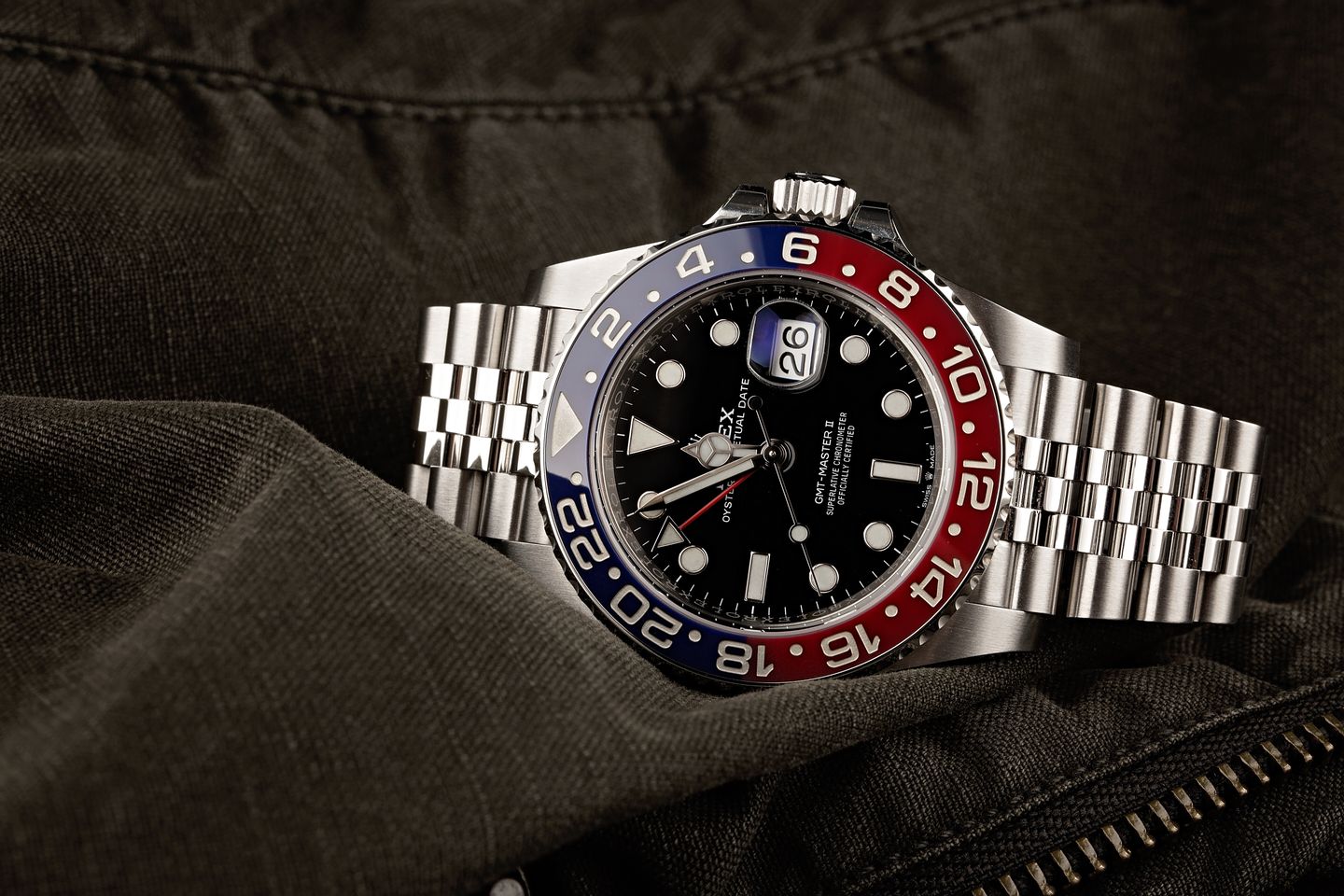
Bakelite Rolex GMT-Master Bezels
When Rolex unveiled the first GMT-Master, ref. 6542, in the mid-1950s, the watch came equipped with a bidirectional rotating bezel with a two-tone Bakelite insert featuring radium luminous markings. Bakelite was the world’s first entirely synthetic plastic that was lightweight, relatively durable, and easy to mold into different shapes. Given those characteristics, Bakelite was initially considered a good material choice for the bezel insert for the GMT-Master watch.
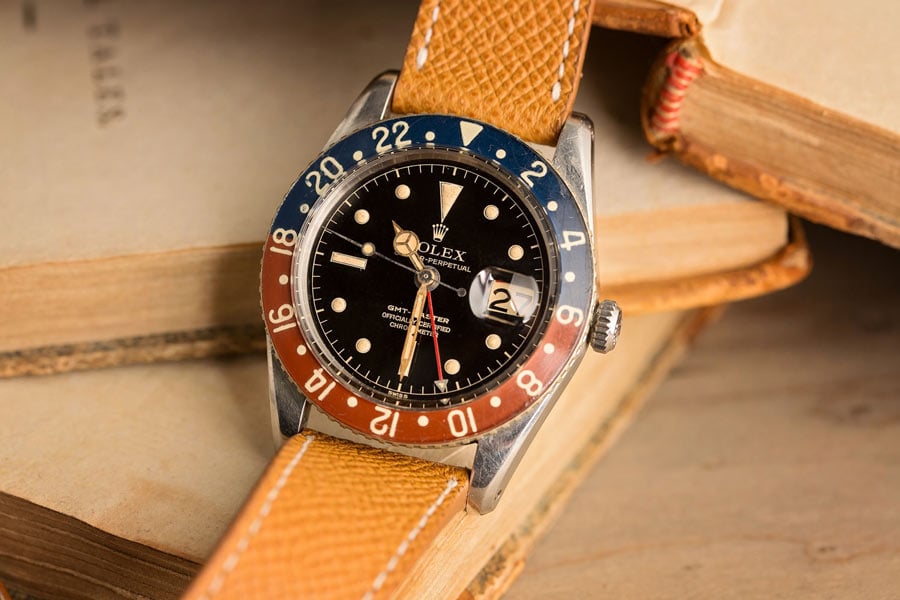
However, it was soon apparent that Bakelite was too brittle and had a tendency to crack – plus the radioactive glowing numerals set into it also posed a potential health hazard. Therefore, Rolex switched over to non-luminous aluminum bezel inserts for later GMT-Master 6542 models in the late 1950s. Furthermore, Rolex service centers also typically replaced any broken Bakelite bezels with aluminum ones. As a result, it is incredibly difficult to find a vintage GMT-Master 6542 with its original Bakelite bezel today.
Rolex made two Bakelite bezels for the GMT-Master ref. 6542. There was the two-tone blue and red version for the stainless steel models, later nicknamed the “Pepsi” bezel. Rolex opted to bring the two colors together to make it easier for pilots to differentiate between night and day hours for reference time – the red portion contained the daylight hours while the blue section had the nighttime ones. The other Bakelite bezel was a reddish-brown one, fitted to the solid 18k yellow GMT-Master ref. 6542.
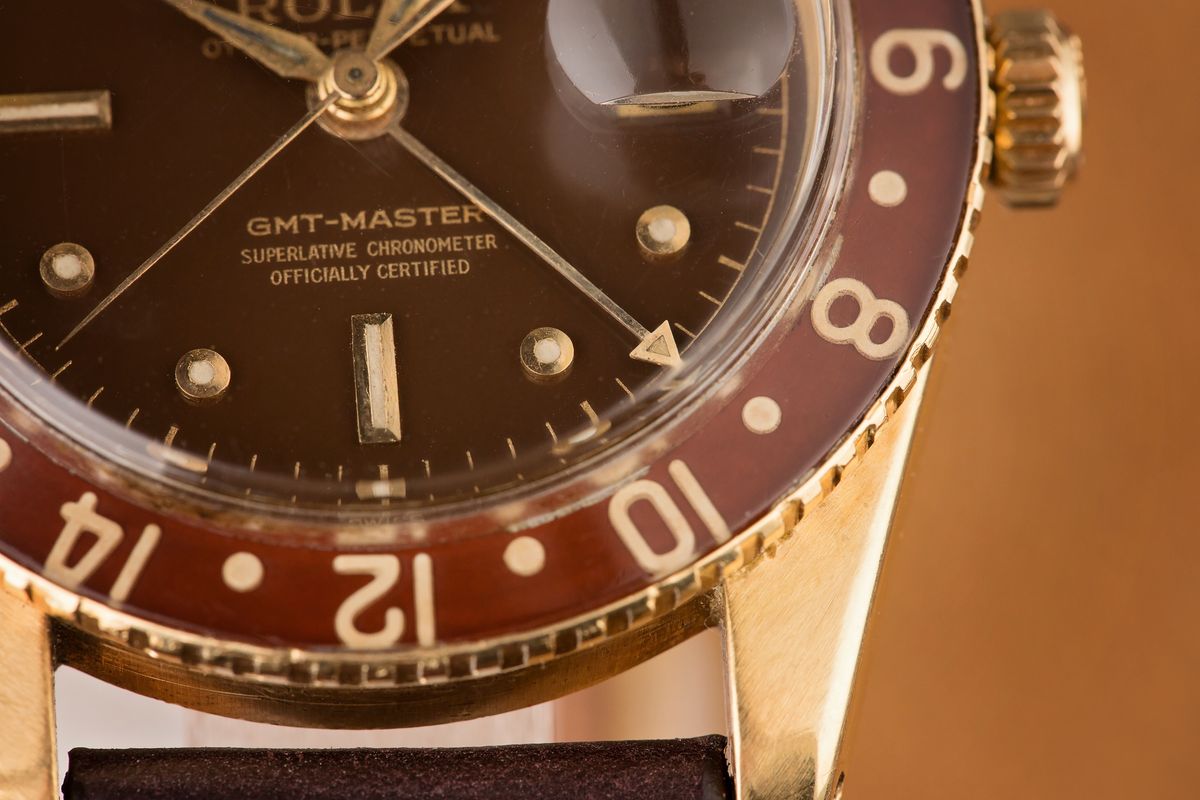
Aluminum Rolex GMT-Master Bezels
Although the ref. 6542 was eventually fitted with an aluminum bezel insert, the GMT-Master ref. 1675 was the first one designed specially to sport an aluminum bezel. The GMT-Master 1675 was introduced in 1959 and it continued to be a part of Rolex’s catalog until 1980. The stainless steel versions were first only offered with the signature blue and red bezels but these were later followed by the option of an all-black bezel in the 1970s.
It’s also important to mention the controversial all-blue “Blueberry” bezel of the steel GMT-Master ref. 1675 from the seventies. These are considered to be somewhat controversial since they were never something that Rolex formerly offered the public. Some claim that these blue GMT-Master bezels were special order ones for the United Arab Emirates government while others assert that they’re not genuine Rolex bezels at all.
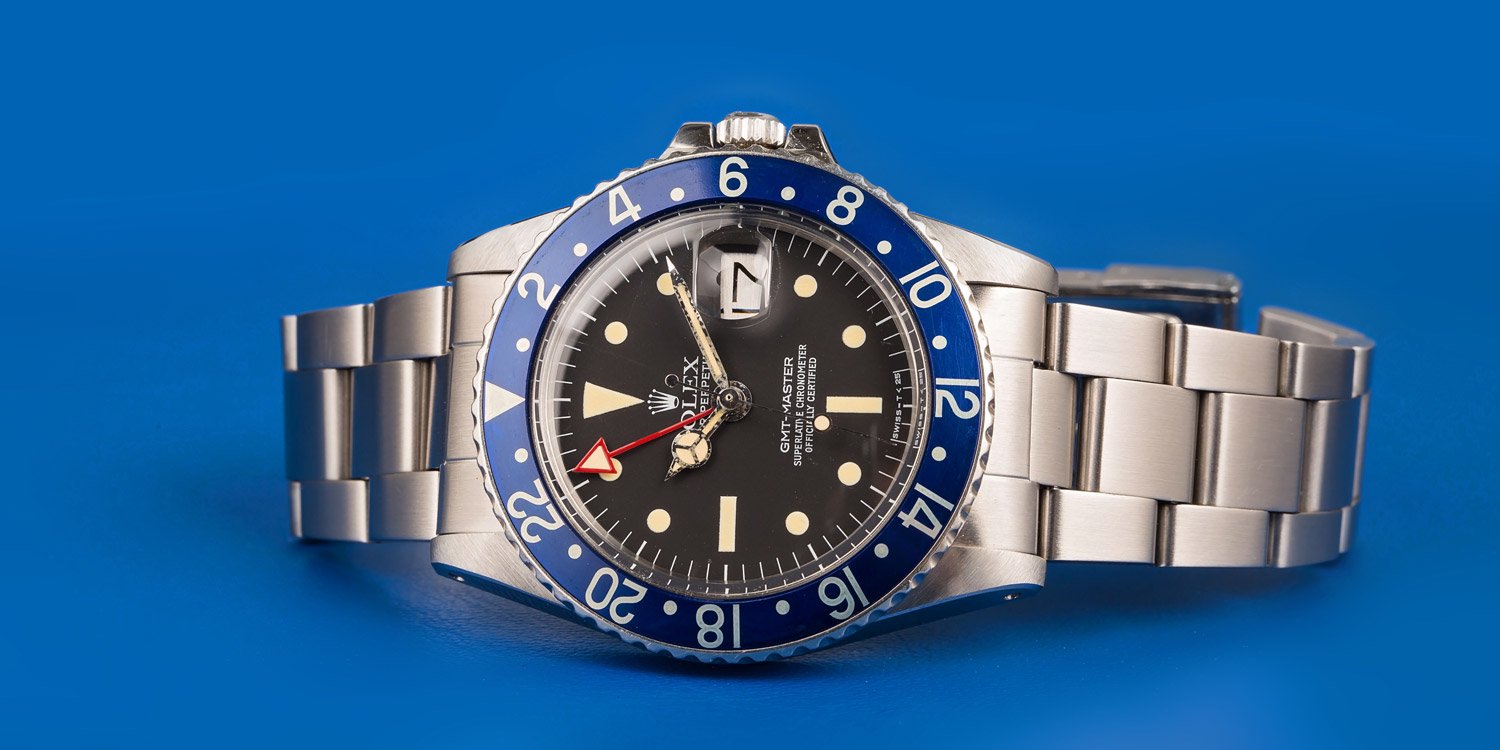
Like its predecessor, the yellow gold GMT-Master 1675/8 models had reddish-brown bezels but these were later joined by the choice of a black bezel insert. In the 1970s, Rolex released a two-tone steel and gold model, the GMT-Master ref. 1675/3, which came with the option of a two-tone brown/gold bezel (nicknamed the “Root Beer”) or an all-black bezel.
These aluminum color schemes continued to the following references produced from 1980 until 1988: the steel GMT-Master 16750, the yellow gold GMT-Master 16758, and the two-tone GMT-Master 16753. Furthermore, the GMT-Master 16700 (only available in stainless steel) made from 1988 to 1999 continued the choice between a red/blue Pepsi bezel and an all-black bezel.
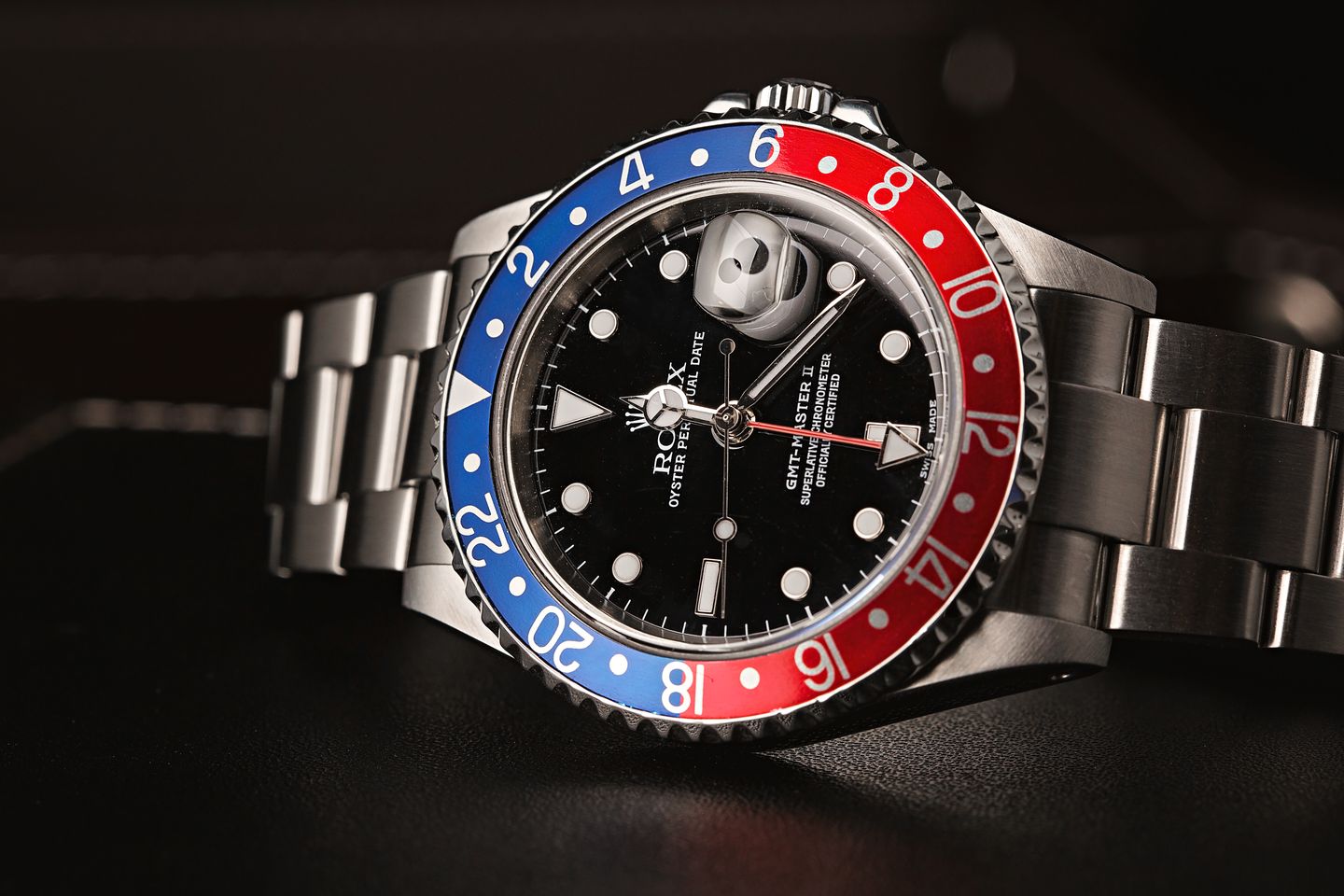
However, stepping back a little, in 1982, Rolex launched the first GMT-Master II model. Along with introducing a new type of GMT movement where the 12-hour and 24-hour hands are independently adjustable, the GMT-Master II ref. 16760 also debuted a new bezel color scheme – red and black, also known as the “Coke” bezel. In fact, the GMT-Master II ref. 16760 only came in stainless steel and only with the option of the red/black Coke bezel.
With that in mind, the second generation of the GMT-Master II, the ref. 16710 presented in 1989, was the most varied in terms of bezel colors with Pepsi, Coke, and all-black bezels available. Plus, the yellow gold GMT-Master II ref. 16718 and two-tone GMT-Master II ref. 16713 also came with Root Beer or black bezels. Offering the widest variety of colors thus far, this generation was the last GMT-Master II to feature aluminum bezels.
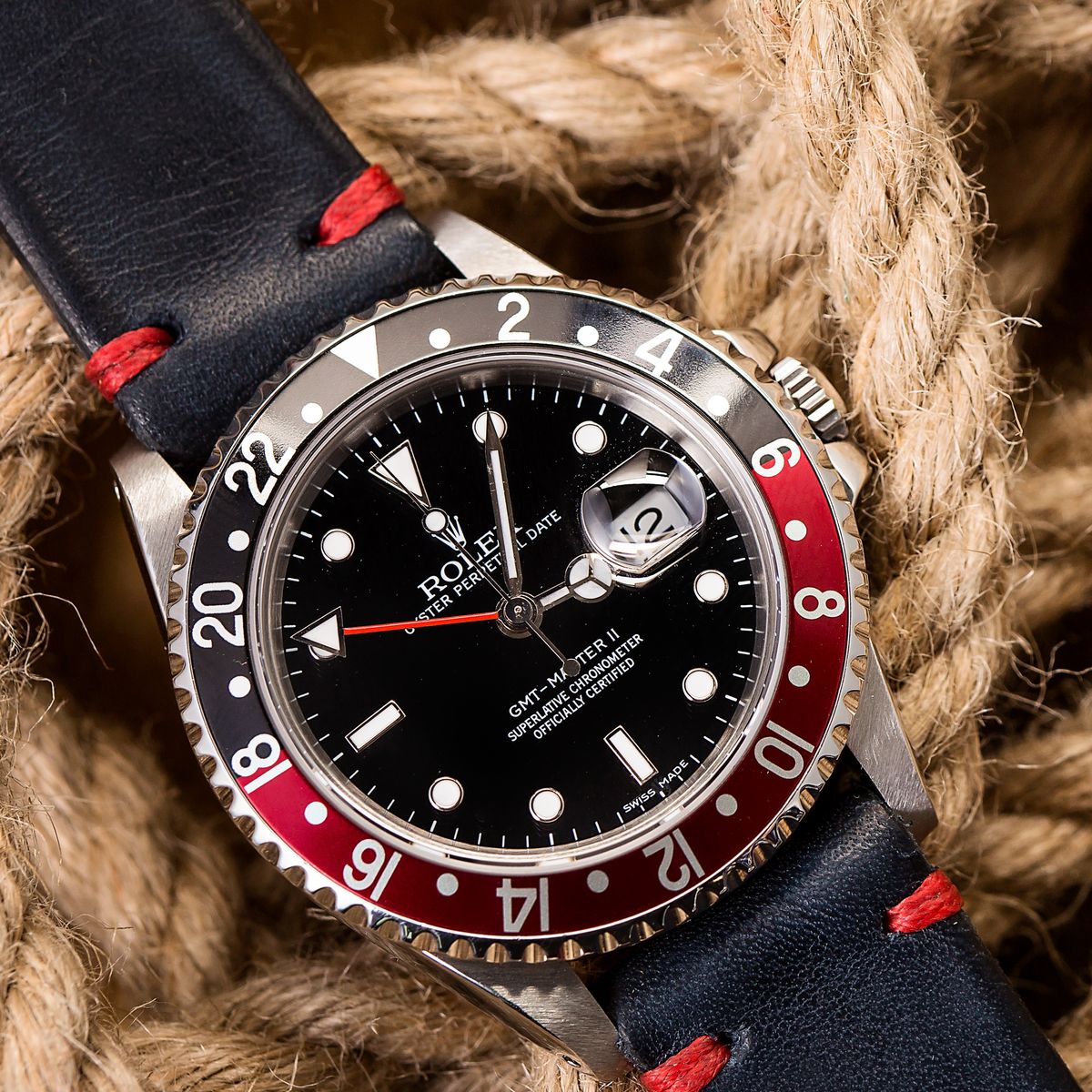
Ceramic Rolex GMT-Master II Bezels
2005 marked the 50th anniversary of the GMT-Master watch. To celebrate, Rolex released an entirely revamped GMT-Master II model complete with a beefier case, new movement, and most importantly, a brand new material for the bezel.
The 18k yellow gold Anniversary GMT-Master II ref. 116718 featured a black bezel made from Cerachrom, which is Rolex’s proprietary ceramic material that is both scratch-resistant and fade-proof. Rolex later followed up the solid gold model with the two-tone GMT-Master II ref. 116713 in 2006 and the stainless steel ref. GMT-Master II ref. 116710 in 2007. At first, Rolex only offered the Cerachrom bezels across all three metal cases in monochromatic black, claiming that it would be impossible to produce a two-tone one in ceramic.
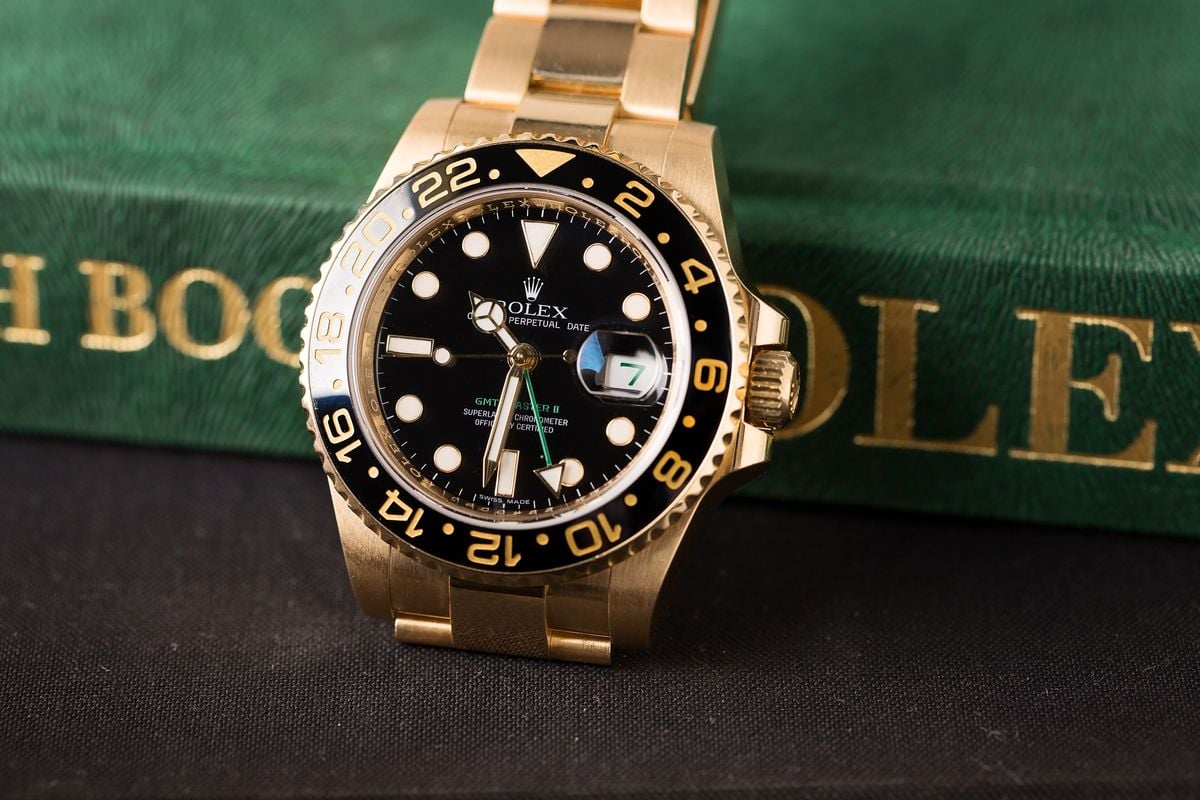
However in 2013, Rolex seemingly made the impossible possible by introducing the stainless steel GMT-Master II ref. 116710BLNR with a bi0-color, black and blue Cerachrom ceramic bezel. Like all two-tone GMT-Master bezels before it, this one quickly picked up a nickname and it’s now known as the Rolex “Batman” among collectors and enthusiasts.
Other two-tone Cerachrom ceramic bezels soon followed including the blue and red Pepsi bezel, first only on the 18k white gold GMT-Master II ref. 116719BLRO in 2014, and then on the stainless steel GMT-Master II 126710BLRO in 2018. There’s also the new Root Beer style bezel in the form of the brown and black Cerachrom bezels on the Everose gold GMT-Master II 126715CHNR and two-tone Everose Rolesor 126712CHNR models.
Today, all of the current-production Rolex GMT-Master II models come equipped with two-tone Cerachrom bezels (except for the gem-set versions), as Rolex no longer offers single color bezels for the collection.
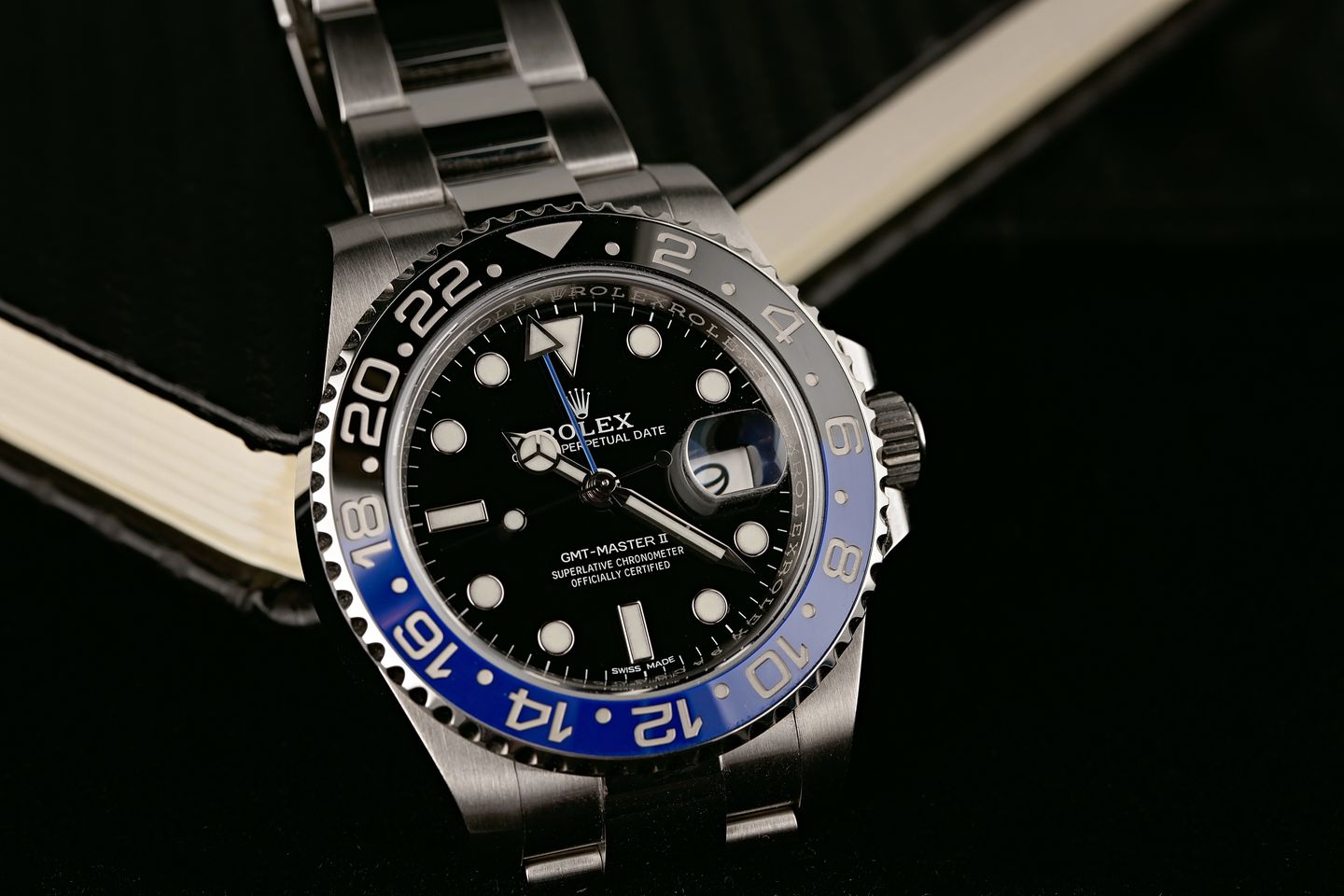
Rolex GMT-Master Bezel Materials, Production Dates, Colors, Nicknames, & Codes
Below is a quick breakdown of the types of GMT-Master bezels made over the years.
Bakelite Bezels (1955 – 1959)
- References: 6542
- Colors: Blue/Red, Brown
Aluminum Bezels (1959 – 2007)
- References: 1675, 1675/8, 1675/3, 16750, 16758, 16753, 16700, 16760, 16710, 16718, 16713
- Colors: Blue/Red, Brown/Gold, Black/Red, Black, Brown, Blue
Ceramic Bezels (2007 – Present)
- References: 116710, 116718, 116713, 116719, 126710, 126719, 126715, 126712
- Colors: Black, Black/Blue, Blue/Red, Black/Brown
Bezel Nicknames
- Blue/Red – Pepsi
- Black/Red – Coke
- Brown/Gold or Brown/Black – Root Beer
- Blue/Black – Batman
- Blue – Blueberry
Bezel Codes:
- BLRO (Bleu Rouge): Blue/Red.
- BLNR (Bleu Noir): Blue/Black.
- CHNR (Chocolat Noir): Brown/Black.
- LN (Lunette Noir): Black
- SARU (Saphir Rubis): Sapphire/Ruby
- SANR (Saphir Noir): Black Sapphire
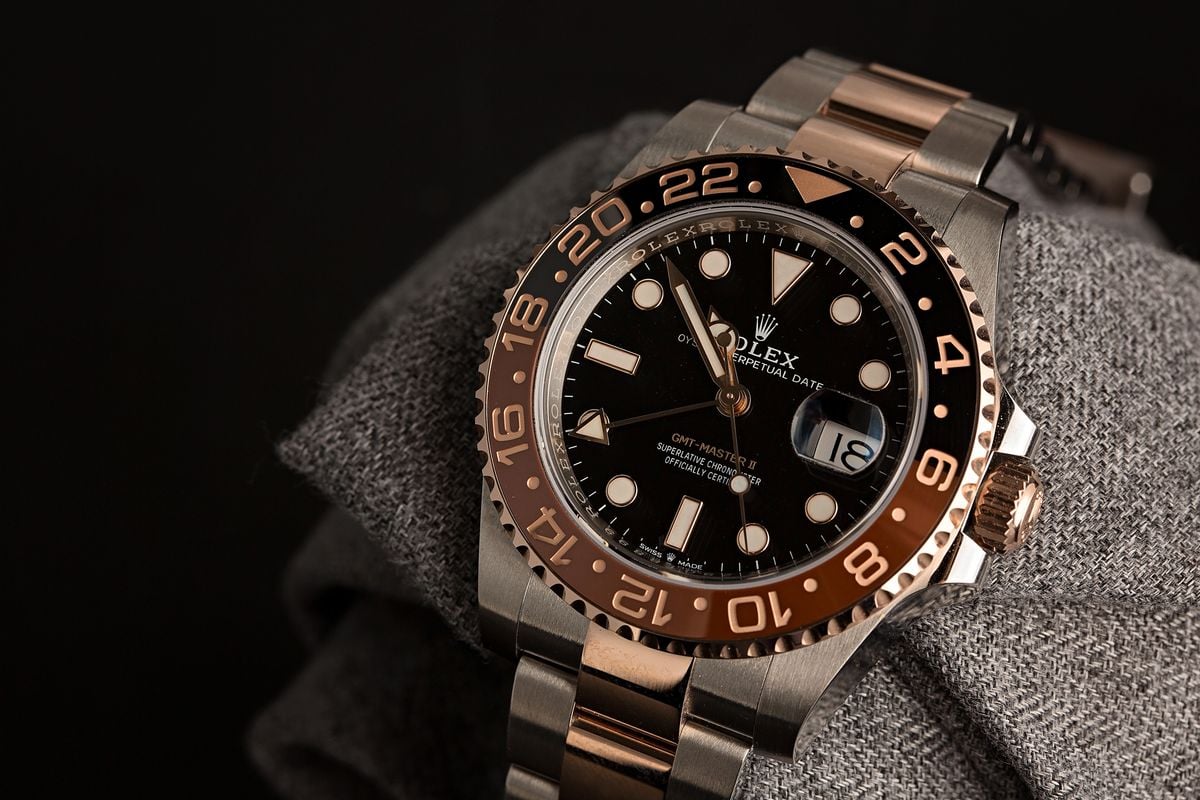
Although we haven’t discussed the gem-set GMT-Master bezels in detail, Rolex has indeed made several of them, although in significantly fewer quantities. Precious gems used include diamonds, sapphires, and rubies, and they are set into the bezel where the even numbers of the 24-hour scale are marked out. There are even some gem-set GMT-Master bezels that have rubies and sapphires that mimic the iconic blue and red Pepsi colorway.
The evolution of the GMT-Master bezel perfectly illustrates the Rolex approach of taking an essential design detail and updating it by using new materials while staying true to the fundamental style. What’s your favorite GMT-Master bezel material and color? Share your comments with us below.
